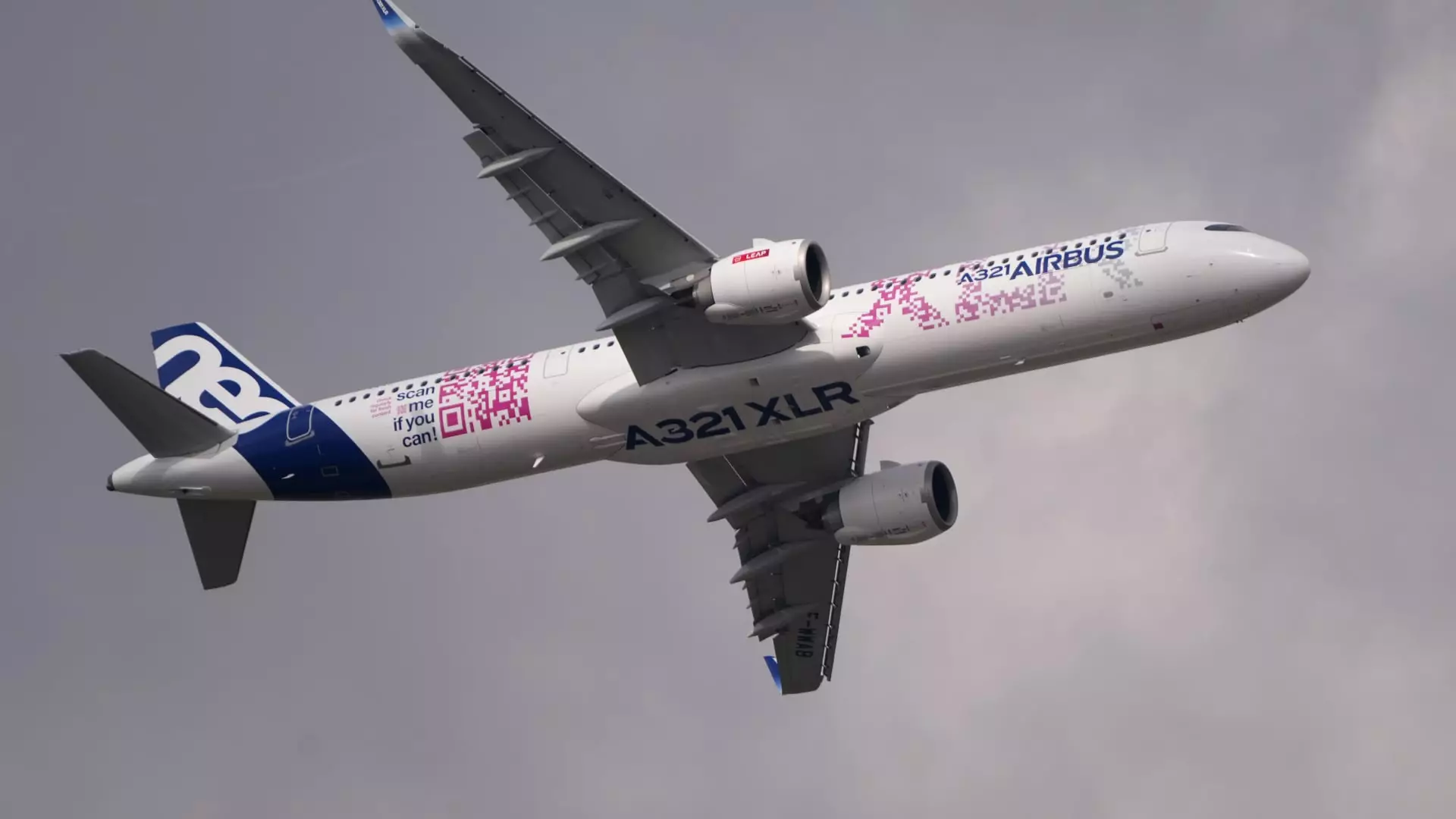In a notable advancement for the aviation industry, Airbus has officially delivered its inaugural extra-long-range narrow-body jet, the A321XLR, to Spanish carrier Iberia. This moment marks the introduction of an aircraft that promises to reshape air travel with its exceptional fuel efficiency and extended range capabilities. As airlines increasingly turn towards smaller, more efficient jets to meet passenger demand for long-haul routes, Airbus is solidifying its position in a competitive market, especially against its primary rival, Boeing.
The A321XLR delivers impressive performance metrics that elevate it above many existing models. With a maximum range of 4,700 nautical miles, it can sustain nonstop flights for up to 11 hours. This feature places it approximately 15% ahead of the A321LR, making it an attractive option for transcontinental services, such as the upcoming route from Madrid to Boston planned by Iberia. Notably, American Airlines and United Airlines have also recognized the aircraft’s potential and placed orders, ensuring its presence on several critical routes.
Airbus’s triumph comes at a crucial juncture for the aviation market. The delivery of the A321XLR accentuates the widening gap between Airbus and Boeing, particularly as Boeing copes with the aftermath of its 737 Max crises. With the world still reeling from two catastrophic incidents involving the Max, Boeing has postponed the launch of an ambitious next-generation aircraft intended to bridge the gap between its smaller 737s and larger wide-body options. Instead, the company is focusing on internal restructuring efforts aimed at financial sustainability, drawing attention to the stark contrast between its strategy and Airbus’s expansionary approach.
One of the most compelling features of the A321XLR is its fuel efficiency. Airbus claims that this aircraft uses approximately 30% less fuel compared to its predecessors, aligning with the growing global emphasis on sustainability in aviation. As fuel prices remain volatile and environmental regulations tighten, airlines are increasingly motivated to invest in aircraft that deliver economic efficiency alongside operational sustainability. The A321XLR is positioned perfectly to meet this dual demand—driving operational profits while contributing to reduced carbon emissions.
With over 500 units of the A321XLR on order and expectations high for its market debut, Airbus is on track to enhance its already impressive backlog of nearly 8,600 aircraft. This resurgence of demand for the A321XLR sets the stage for a new chapter in commercial aviation. As the global aviation landscape continues to evolve, the ability to provide efficient and reliable service will be paramount, and the A321XLR stands at the forefront of this transition.
Airbus’s strategic release of the A321XLR not only reinforces its competitive edge but also reflects a broader industry shift toward innovative and eco-friendly air travel solutions. The future looks promising for the A321XLR and those who choose to incorporate it into their fleets.

